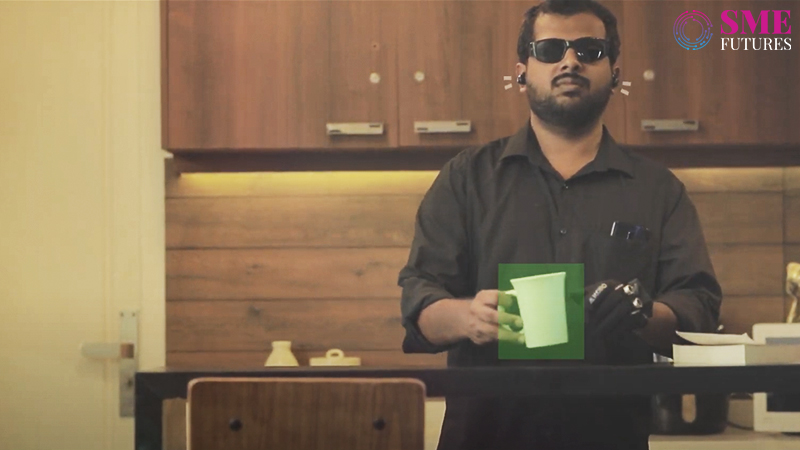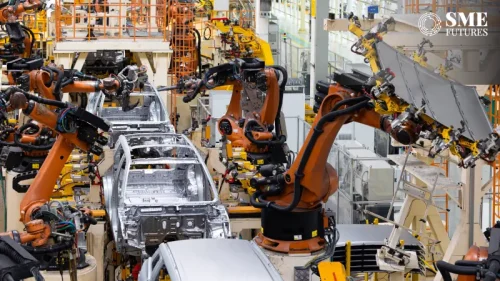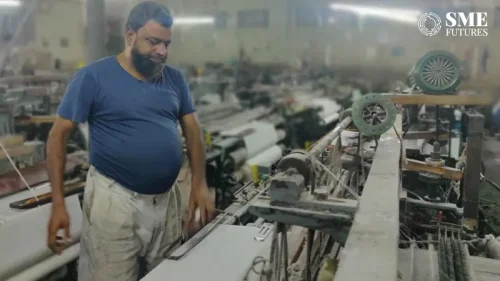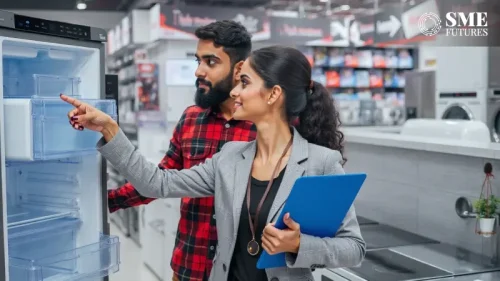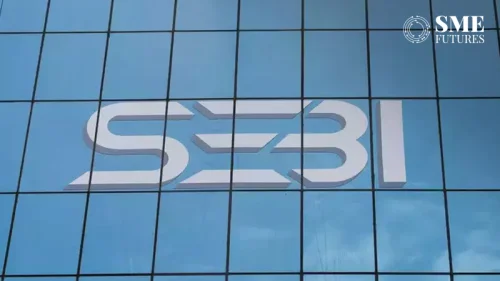World is home to over 2.2 billion visually challenged people who wake up in perpetual darkness. Vision is either cloudy or blurry for most of them. Among these, 62 million people who suffer from partial or complete blindness live in India. But assistive technologies have now come to their rescue, which have made their daily lives easier.
Until now use of assistive tech solutions such as DoT, Glucowear, Tap See etc meant big devices with clumsy hardware and software such as screen readers. Today, many technology startups are developing solutions in assistive technology with AI and machine learning(ML) tools.
Artificial Intelligence(AI) and Deep-Learning(DL) may prove to be very beneficial in ophthalmology such as for screening, diabetic retinopathy(DR), and retinopathy of prematurity(ROP) for which well-defined guidelines exist. Few other ailments such as AMD and glaucoma may also require screening and long-term follow-up.
However, it requires tremendous manpower and infrastructural resources from healthcare systems. One such Indian startup is Nexart, which has developed solution based on IoT and AI in efforts to help the visually impaired and blind. They are developing better voice recognition, vision recognition, and object detecting solutions based on AI and ML.
Eyewey- an affordable artificial vision
Nandujith Pratap Jeetha, Founder and CEO at Nexart while speaking to SME Futures explains about soon to be launched solution. He says, “Eyewey is an assistive technology which primarily uses visual recognition to help the visually impaired to navigate and understand the world around them.”
He further tells that there are various technology solutions in the market but not many of them are efficient and affordable. These cater to the needs of blind people, that is why they developed Eyewey.
Eyewey is an affordable solution with a rigid design that works on a combination of visual AI and IoT based distance measurements. According to him, a large population of these people due to socio-economic challenge are leading a hard life. “We just want to be there for society and to give them better quality of life,” he adds.
The firm claims that its solution is as cheap as Rs.1000-4500. He adds, “Since we always wanted to build and deploy our own ideas, we adopted a product development model by bootstrapping ourselves to our core team of four. Then, we focussed on image recognition and financial technologies from the start of 2019,”
Globally, the leading causes of vision impairment are uncorrected refractive errors and cataracts. The majority of people with vision impairment are over the age of 50 years. Elaborating more about the solution, Nandujith says, “While we were working on image recognition, the idea for making solution for blind people got conceptualised. We first named it ‘Ioptyc‘, then we changed it to Eyewey.”
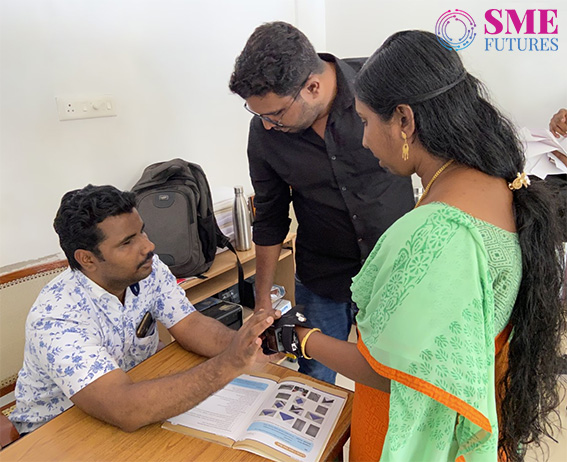
Simple to use self learning app
As most of the assistive technologies comprise of heavy devices and software, Eyewey comes in the form of app and is easy to use. The solution is a combination of visual recognition technology and distance measuring sensors to help people with complete visual impairment to navigate and understand the world around them.
The core component of Eyewey is the mobile app which utilises the power for visual recognition to recognize objects and notifies the user about an object over the headphones. It means no heavy devices, the whole solution is just a click away.
He adds, “Eyewey uses its own unique Visual AI framework developed under Nexart allowing it to recognise a much wider range of objects, thereby understanding and learning scenarios through deep learning. It reads text and also recognises as well as responds to speech.”
One of the most fascinating feature of the solution is that it can learn from the experience and update itself. He tells, “This is one of the USPs of our solution. We have been able to create a unique framework for Eyewey by combining Image Recognition and Deep-Learning to generate Visual AI allowing the app to learn for itself, and make itself better for the user.”
Since it is equally important for the user to also feel these objects, the startup has added an additional product to its solution in the form of a glove. This glove contains IoT sensors. These sensors are used to measure distances on each axis and notify the user through vibrations.
“The gloves when near an object produce vibrations by vibration motors. The sensors can detect up to two metres. While, the intensity of vibrations vary with distance of the object from the user, thereby giving the user a feel of the distance of the object. The glove act as an added support for the working of the Eyewey App helping the user to understand and feel what is around them,” Nandujith explains.
Maintaining affordability a primary challenge
Often consumers are price sensitive, and Nexart target audience primarily comprise of specially-abled people. These are mostly connected to NGOs and can not afford a high cost solution, especially in India. Keeping this in view, Nexart wanted to design a solution which is affordable for all.
“Creating an affordable product was one of the milestones for us which we wanted to achieve while developing Eyewey,” says Nandujith. As per the company claims, the price of solution is at a minimum Rs 1000 and maximum for Rs 5,000 in the Indian market. The pricing for MENA region is less than Rs 8000.
How did they achieved to cut cost, answering it the founder explains, “We were able to achieve this by packaging the most prominent features of Eyewey into a mobile application which greatly reduced the cost of development.” The Nexart development team next target is to further reduce the cost.
Nandujith informs us that to achieve the same they are constantly looking at ways to move the functionalities of the glove into the app. He says, “This is the trickiest part to solve and we are trying various possibilities to achieve it. According to our estimates, once its done 60 per cent of our expenses then will be for marketing and branding of the solution.”
Journey from prototype to a mobile app
Every startup originates from an idea, but an idea cannot work alone. The funding and mentorship are inevitable for executing an idea of a start-up. For Nexart, that mentorship was provided by Authority of Social Contribution – Ma’an which was established by Department of Community Development in Abu Dhabi.
In September of 2019, the startup demonstrated their prototype in Abu Dhabi. Here, the government was offering considerable support and incentives to entrepreneurs in an effort to build a tech-enabled future. Among the ten global startup as competitors, Nexart became the first Indian startup to be incubated under Ma’an Social Incubator and Accelerator.
A Nexart team member views this as a milestone as getting a mentorship opportunity in Ma’an Social Incubator Programme has been pivotal point in their journey. He recounts, “Ma’an’s Social Incubator Programme supports entrepreneurs and startups who are focused on social, cultural or environmental issues. Hence, it was a great fit. We were given a funding, a stipend, training and networking opportunities,”
According to him, this greatly fuelled their desire to innovate more on Eyewey and we were able to develop a minimum viable product(MVP) within the first four months of incubation. “We were also honoured to receive mentorship from the Zayed Higher Organisation and the Emirates Association for the Blind, who further guided us on improving our product,” he adds.
Apart from the recognition for Eyewey, the startup has also been nominated as one of the top ten startups globally in June 2020 in the CovHack Challenge held in Dubai. It is held by Stratecis in conjunction with United Nations and Government of Dubai for financial technology prototype named Hyloca.
The startup is now all set with its beta-tested version of Eyewey in the Indian market. Nandujith tells, “We currently have 20 people with complete visual impairment from Abu Dhabi and India. They are helping us as mentors from MVP to prototype of Eyewey, providing us suggestions on what needs to be optimised, what works, and how to improve upon our solution.”
Future of apps for visually impaired
So far, Nexart is getting benefits of being based in Abu Dhabi, which has enabled them to take advantage of its fantastic global connectivity. It centrally located between Asia, Africa and Europe. An added advantage of this venue is its flexible business environment, which welcomes startups that are proposing innovative solutions to global challenges.
As now they are foraying into the Indian market, the firm believes that it will be another challenge to stand in the market full of tech players. However, their unique solution for special target audience is going to definitely give them an opportunity.
Nandujith says, “We do believe the Indian market is a tough market for very early stage startups such as ourselves to penetrate because of immense number of solutions projected by other startups unless we are able to penetrate this sheath.”
Talking about their market strategy, he tells that their primary strategy will be word-of-mouth marketing. He adds, “As part of marketing we hope to initiate training programs on the use of Eyewey in close collaboration with other entities. And we have already started to connect with all schools, associations, and organisations in our locality for this.”
The startup is also working on online campaigns in design to go live once the solution enters into in the market. These campaigns are modelled to create awareness on Eyewey and also on creating communities of people who are aligned to help people of determination especially people with visual impairment.
On the other hand, Nexart research and development team is constantly working on other propreitery ideas. Nandujith elborates us that his team is working to optimise their new Visual AI framework for Eyewey. He adds, “We also want to expand Eyewey in other sector not just as an assistive technology. It can also be implemented into other sectors such as construction, farming, waste management, robotics etc. with minimal change,”
Talking about the roadmap for the firm, he says, “We are also working on our financial technology named Hyloca, which is a hyper local order management and networking platform along with an online project collaboration platform named LiteBox to be launched by the end of 2020.”
In India, the burden of visual impairment is estimated to be 62 million; of these 54 million persons have low vision and 8 million are blind. According to a report, India is constantly under verge of increasing cases of visual impairment among senior citizens. The reasons being uncorrected refractive errors and cataracts. Taking these factors into consideration, the innovative and affordable technology from Nexart can certainly prove to be a turning point

